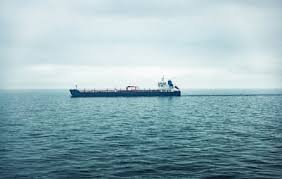To finance its war against Ukraine by selling oil, Russia is using old tankers, often without valid registration or transponders and which swap (and spill) cargo at sea. In this way Russia is attempting to break the international trade sanctions imposed on it because of its unprovoked invasion of Ukraine. Iran, also subject to trade embargos because of its support for Hamas and other terrorist organisations, is similarly engaged in what is actually wholesale smuggling.

But using “crowdsourced” data, satellites and smart algorithms the West is tracking them down. Central to the monitoring and detection of their activities is a Ukrainian government initiative called the Russian Tanker Tracking Group (RTTG).
Unfortunately Kazakhstan oil also seems to be occasionally exported through this mechanism, and there are always unscrupulous dealers willing to accept cheap crude for refineries or to send refined oil back to Russia by the same routes. And to add to the complexity shipowners can sometimes be unaware that there ship is being used by its crew or others for sanctions bustings.
However AI assisted “network analysis” software, supplemented by occasional random sighting information and ship speed change data plus images showing how low or high in the water the ship is floating can very precisely highlight suspicious behaviour, with a London based data analysis firm specialising in detecting “trans-shipment” incidents either in port or at sea.
Since a moving ship with a transponder off is very much a “give-away” situation, most illicit ships still have them in use and so useful streams of data continue to reach the Automatic Identification System (AIS) and to increase the precision of shipping locations more AIS receivers are being installed in important areas. A Greek company is supplementing this process by recruiting owners of high buildings beside coast to install receivers on their roofs, which they will supply. Satellites too can pick up AIS signals.
Low orbit satellites can detect ships’ radars and can detect ships optically, even in the dark and below cloud using synthetic-aperture radar, while a library of ships’ radar pulse “fingerprints” is being assembled world-wide.
More difficult than the actual detection of the ships, their courses and their activities is mess of shell companies and opaque company reports which obscure ownership – but with AI even this is being tackled.
So the tide may be turning for Russian and Iranian sanctions evasion.
(an article in The Economist of 16/04/2022 is acknowledged)